Notes
The Second Coming: The Messianic Visuals of LeBron's Return to Cleveland
On July 8, 2010, LeBron James infamously declared before a live television audience that he would “take [his] talents to South Beach” to play basketball for the Miami Heat. James was roundly criticized for his role in “The Decision,” an unprecedented mediated spectacle orchestrated by members of James’s “team” and the “Worldwide Leader in Sports,” ESPN. The criticism was well-deserved, given the appearances of insensitivity by James and opportunism by the network.
The program itself was largely a bore, dragged out by insipid questions from Jim Gray and framed by the transparent effort to deflect criticism by claiming the nobility presumably earned by making the event a fundraiser for the Boys & Girls Clubs. Perhaps never has an athlete so beloved so quickly become a source of so much disappointment and anger. It was one thing to leave the Cleveland Cavaliers for the Miami Heat; it was quite another to make them suffer the indignity of being rejected before a live television audience.
Four years later, the story is very different. National sports media—ESPN, in particular—engaged in just as much speculative nonsense (perhaps more, given the growth of Twitter’s influence). This time, however, James was not an equal partner. Rather than feed the beast and succumb to the temptations of another spectacle, James chose to deliver this decision on his own terms, writing his own statement (with some outside assistance, no doubt) and filtering his announcement through the lens of Sports Illustrated’s website “emphasizing work, family, and most importantly, home.”
James’s greatest sin in 2010 was that he abdicated his responsibility as the “savior” of Northeast Ohio and betrayed his “witnesses.” Now, as he writes, “My relationship with Northeast Ohio is bigger than basketball. I didn’t realize that four years ago. I do now.” Say what you will about the statement as a cynical piece of public relations, it is undoubtedly playing well among the faithful in Cleveland.
As compelling as the words may be, it is also worth lingering over the image that accompanied James’s statement. Part of the failure of “The Decision” in 2010 was that it was visually excessive—the entire event played out as a carnival of images foisted upon the public by a media organization (ESPN) all too pleased by its own influence (weak attempts at self-reflection notwithstanding). By contrast, this weekend’s announcement was visually muted, a relatively brief statement punctuated by the above photo of a gently smiling, apparently earnest LeBron James. Nearly everything about the 2010 announcement spotlighted James’s youth—from his casual dress to the very idea that he was motivated by the opportunity to hang out in South Florida with his buddies. In 2014, the SI photo portrays a more thoughtful and mature James, dressed more formally in black against a similarly black background.
More than the implied maturity, James also appears as if he’s eager to engage his viewers in a conversation. He is leaning forward, hands folded as though they are ready to open up and translate the words below (not to mention the prominence of one of James’s two NBA championship rings on his right hand). Coupled with the words that appear below this image, this is a LeBron James who is older, wiser and more appreciative of the community to which he is poised to return. In an event that was surprisingly subdued from a visual standpoint, this single snapshot summarizes a range of meanings. Thus far, commentators seem to find James’s sentiments to be sincere expressions of his growth and commitment to Ohio and its fans (see here, and here, and here). Surely, his words have much to do with this. But because the 2014 decision lacked the visual excesses of the 2010 spectacle, the image that accompanied the announcement plays an important role in James’s successful return to Cleveland.
An important corollary to this absence, however, is the realization that LeBron James’s surrogates were more than happy to fill the visual void. From television and newspapers to Twitter and Instagram, the humility implied by the SI photo opens the door to an array of celebratory images. Interestingly, many of these images echo the religious frame I alluded to above. When “King James” began his career in Cleveland in 2003, he was hailed as nothing less than a savior, an athletic messiah whose reign would bring glory to his fans/witnesses. Nike’s famous “We Are All Witnesses” campaign, which debuted in 2005, condenses this imagery into the power of James’s athleticism; in a 2007 update, the shift in imagery is notable.
James’s pose evolved less from any Christian imagery than it did from a pre-game ritual during which he fills his hands with chalk and then tosses them upwards, letting the dust settle as his arms stretch wide (Nike has made an ad based on this, too). Nevertheless, the crucifixion symbolism is undeniable, especially in light of the many re-appropriations of the image. (The file photo leading this post just published by a local Cleveland radio station, the chalk bisecting a row of lights, is surprisingly literal.) Indeed, this past Friday’s announcement prompted a flurry of such interpretations. For example, one well-circulated photo is of an ESPN reporter standing before fans holding a poster, “The King Has Returned.”
On its flagship program, “SportsCenter,” ESPN itself featured a similar silhouette with its headline, “Return of the King.”
Perhaps most striking was the front page image from the Cleveland Plain-Dealer, which featured “Home” above a passage from James’s statement and an artist’s rendering of the once-and-future king/savior with arms now reaching for the heavens.
These images, of course, are only a small sampling, but the symbolism should be clear: LeBron James is still a savior, the prodigal son awaiting his redemption. This is the very narrative that made his departure in 2010 so painful for many Clevelanders and it feeds into so much of the visual spectacle that has long accompanied James. And it is likely one to which LeBron James is attuned, given the speculation that he seeks to play a heroic role in the hearts and minds of his fellow Ohioans. With that in mind, if his own announcement lacked spectacular imagery, he is surely content to let others generate it for him.
— Michael Butterworth
(photo 1: Getty Images via Konata.com . photo 2: Getty Images via NBA.com. photo 3: Walter Iooss, Jr. Sports Illustrated photo 4 & 5: NikeBasketball.com, photo 6: Mark Duncan, Associated Press: caption: Thomas Wolfe was wrong. You can go home again. LeBron James, seen as a villain in Cleveland after taking his talents to Miami, has returned. With that in mind, here are some Dallas native sons and pros who achieved great things in the area that we’d like to see return and lend a helping hand on the pro sports scene. Photo 7: ESPN: SportsCenter. Photo 8: Cleveland Plain Dealer.)
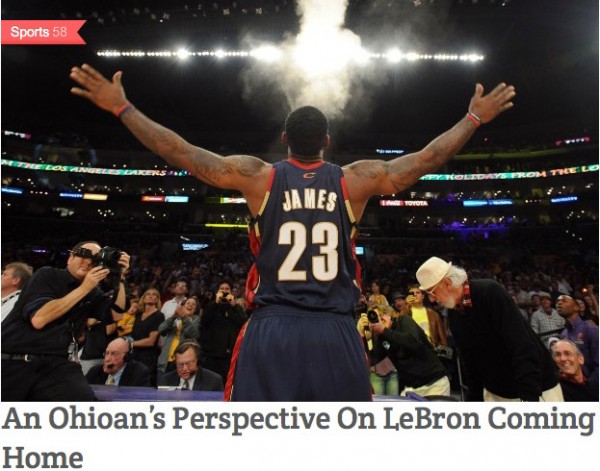
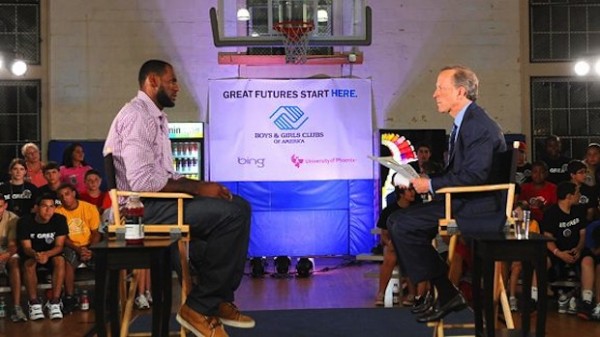
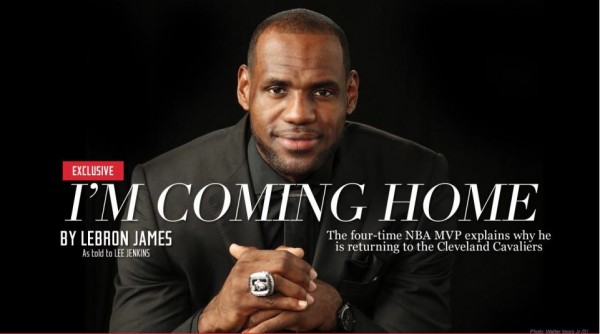
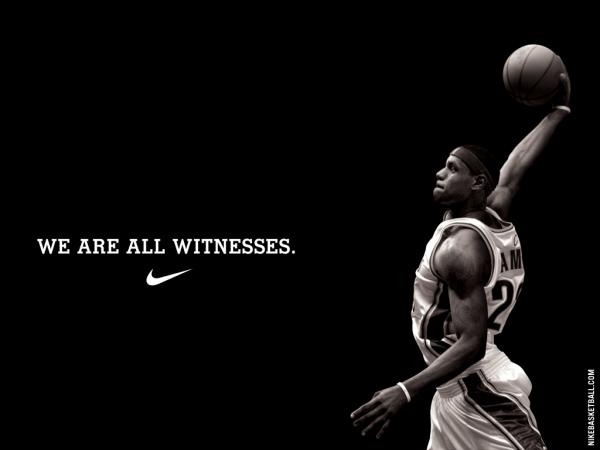
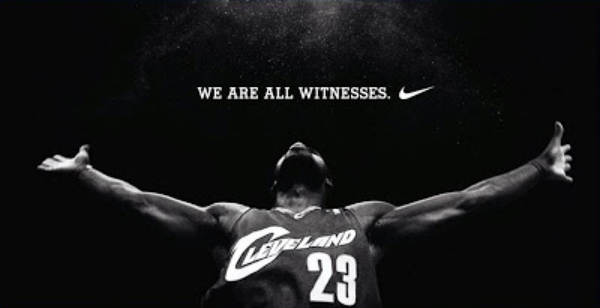
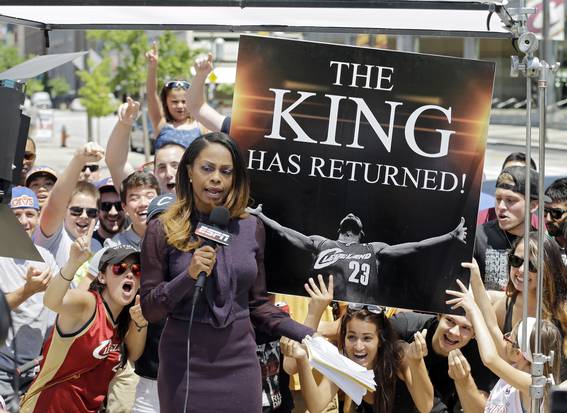
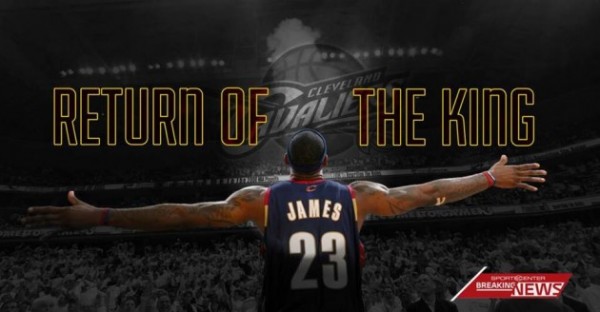
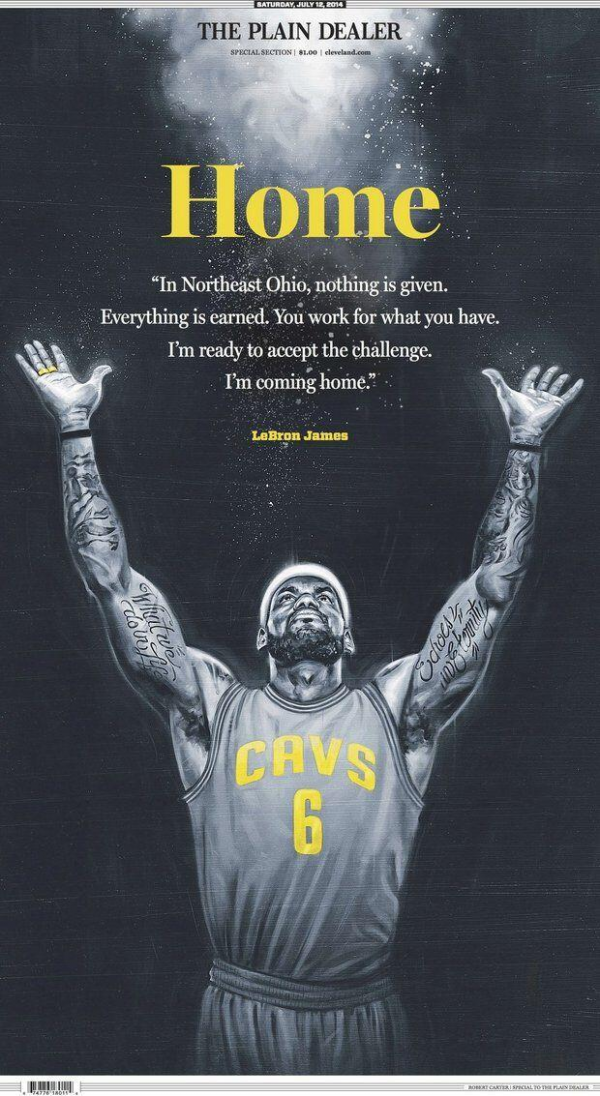
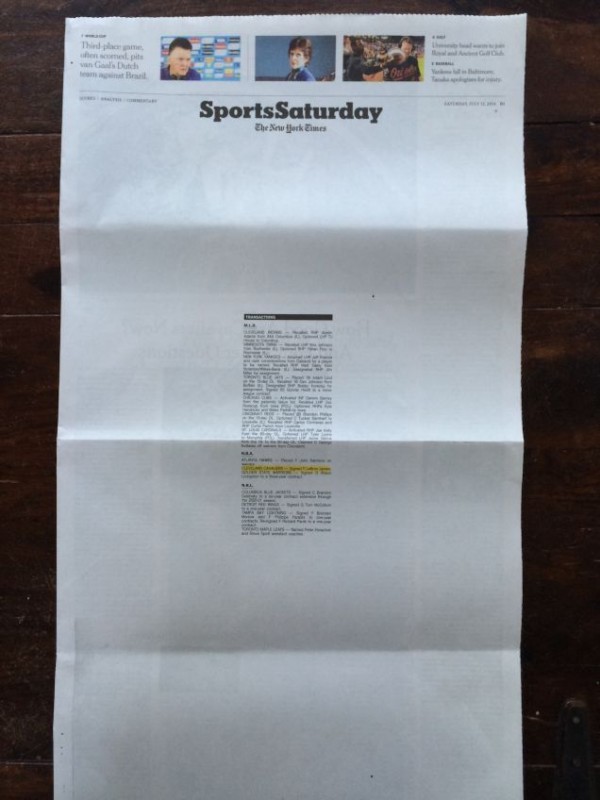
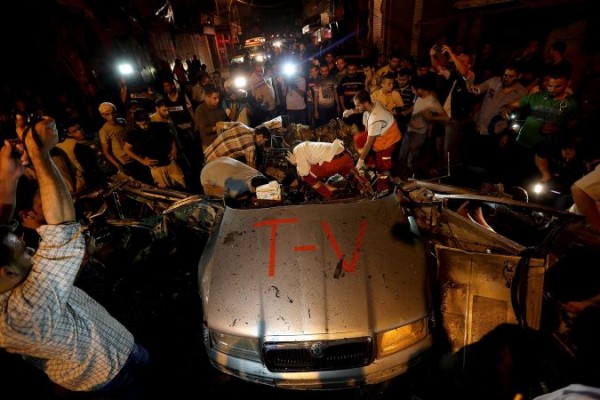
Reactions
Comments Powered by Disqus